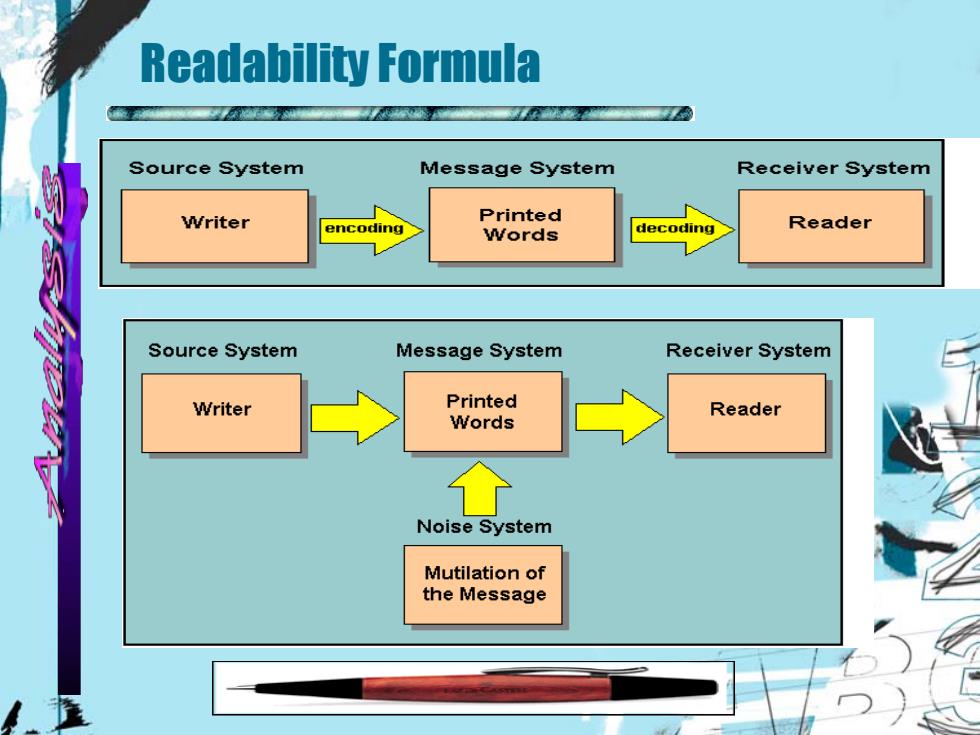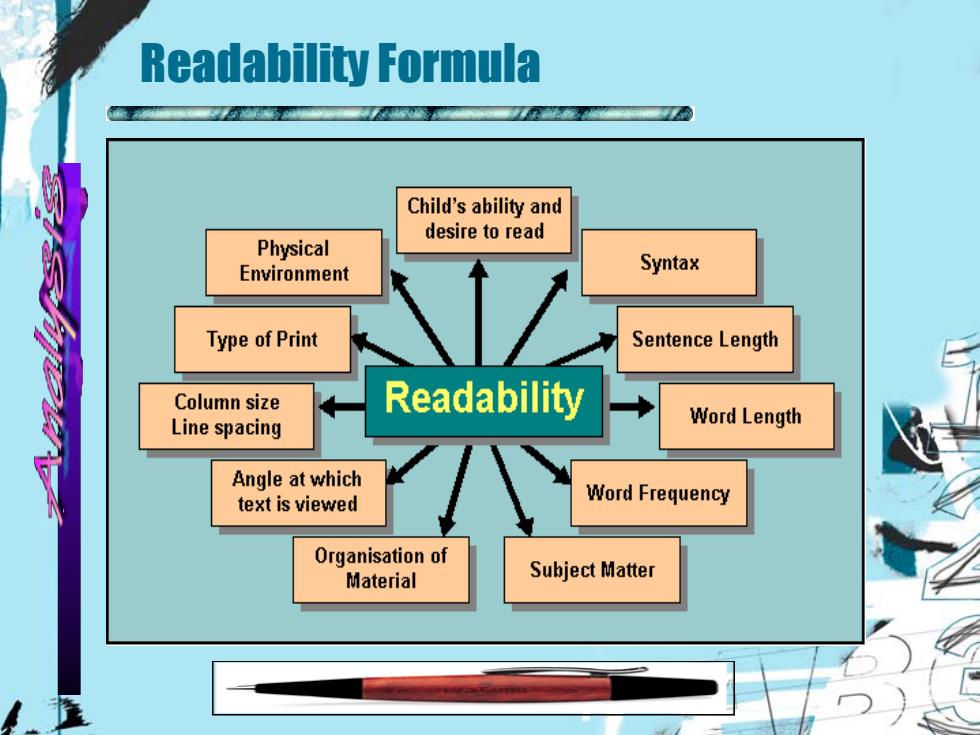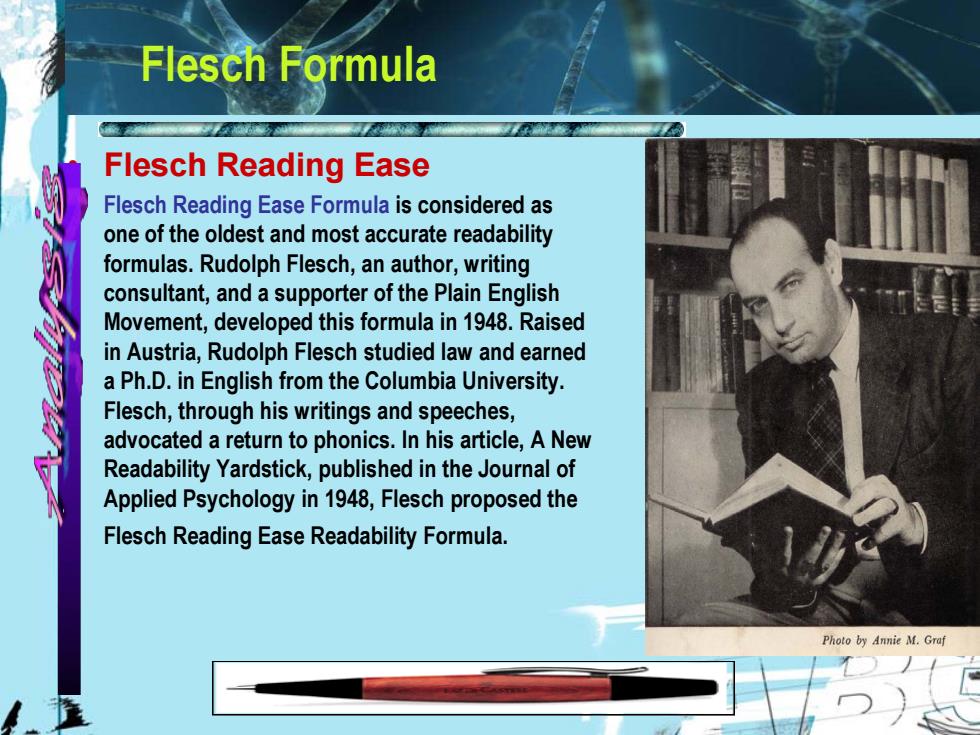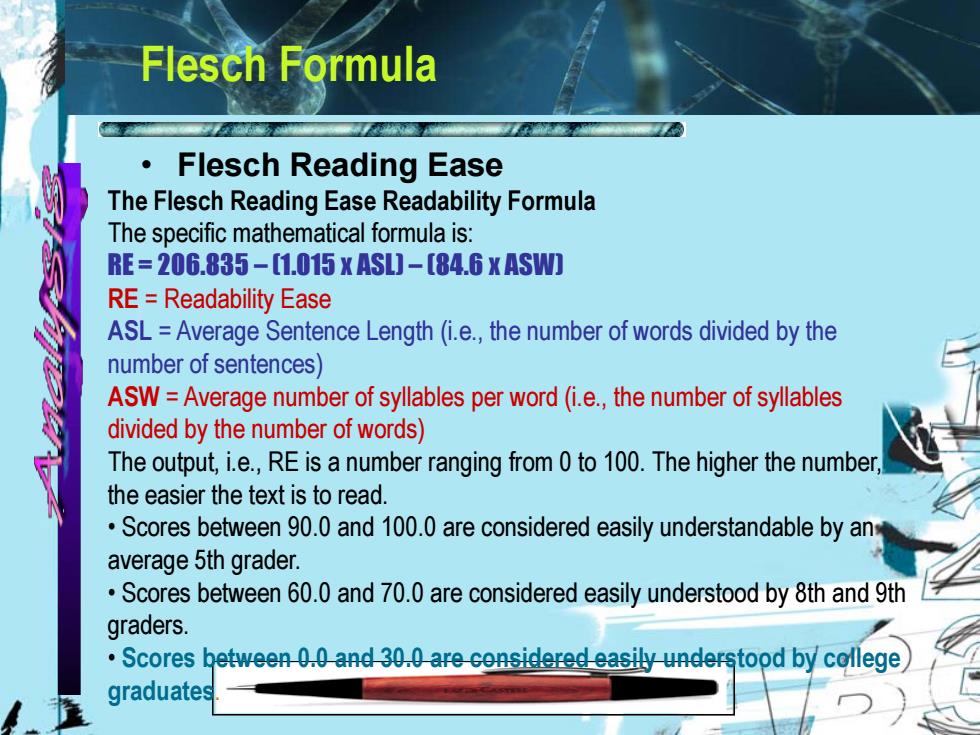
Readability Formula Source System Message System Receiver System Writer Printed encoding decoding Reader Words Source System Message System Receiver System Writer Printed Reader Words Noise System Mutilation of the Message
Readability Formula

Readability Formula Child's ability and desire to read Physical Environment Syntax Type of Print Sentence Length Column size Readability Line spacing Word Length Angle at which text is viewed Word Frequency Organisation of Material Subject Matter
Readability Formula

Flesch Formula Flesch Reading Ease Flesch Reading Ease Formula is considered as one of the oldest and most accurate readability formulas.Rudolph Flesch,an author,writing consultant,and a supporter of the Plain English Movement,developed this formula in 1948.Raised in Austria,Rudolph Flesch studied law and earned a Ph.D.in English from the Columbia University. Flesch,through his writings and speeches, advocated a return to phonics.In his article,A New Readability Yardstick,published in the Journal of Applied Psychology in 1948,Flesch proposed the Flesch Reading Ease Readability Formula Photo by Annie M.Graf
• Flesch Reading Ease • Flesch Reading Ease Formula is considered as one of the oldest and most accurate readability formulas. Rudolph Flesch, an author, writing consultant, and a supporter of the Plain English Movement, developed this formula in 1948. Raised in Austria, Rudolph Flesch studied law and earned a Ph.D. in English from the Columbia University. Flesch, through his writings and speeches, advocated a return to phonics. In his article, A New Readability Yardstick, published in the Journal of Applied Psychology in 1948, Flesch proposed the Flesch Reading Ease Readability Formula. Flesch Formula

Flesch Formula Flesch Reading Ease The Flesch Reading Ease Readability Formula The specific mathematical formula is: BE=206.835-1.015xASL)-[84.6XASW0 RE=Readability Ease ASL=Average Sentence Length(i.e.,the number of words divided by the number of sentences) ASW=Average number of syllables per word(i.e.,the number of syllables divided by the number of words) The output,i.e.,RE is a number ranging from 0 to 100.The higher the number, the easier the text is to read. Scores between 90.0 and 100.0 are considered easily understandable by an average 5th grader. Scores between 60.0 and 70.0 are considered easily understood by 8th and 9th graders Scores hetween-0.0 and 30.0 are censidered easily understood by college graduates
• Flesch Reading Ease Flesch Formula The Flesch Reading Ease Readability Formula The specific mathematical formula is: RE = 206.835 – (1.015 x ASL) – (84.6 x ASW) RE = Readability Ease ASL = Average Sentence Length (i.e., the number of words divided by the number of sentences) ASW = Average number of syllables per word (i.e., the number of syllables divided by the number of words) The output, i.e., RE is a number ranging from 0 to 100. The higher the number, the easier the text is to read. • Scores between 90.0 and 100.0 are considered easily understandable by an average 5th grader. • Scores between 60.0 and 70.0 are considered easily understood by 8th and 9th graders. • Scores between 0.0 and 30.0 are considered easily understood by college graduates